Navarra Foodie Guide
(What To Eat, Regional Produce, Wines, Recipes, And Travel Tips.)

The Navarra region is defined by a rugged yet picturesque landscape, with the Pyrenees mountains bordering France to the east, and fertile zones along the Ebro river which is considered a lifeline to the many farms along its banks.
The population of Navarra is around 650,000 people, with the majority of the population living in the capital city of Pamplona. The region is home to a diverse range of people, with a mix of Spanish, Basque, and French cultures, which is evident in many of the dishes from Navarra.
This Navarra foodie guide will explore the most popular dishes from this region in the north of Spain, plus look at famous produce from the region, drinks, desserts, and wines. We’ll also cover how to get to the Navarra region, and what is not to be missed once you are there!
Geography and Landscape
Navarra is located in northern Spain between the Pyrenees Mountains and the Ebro River, making it a diverse and beautiful region with plenty to offer everyone from outdoor enthusiasts to foodies.
The Pyrenees mountain range runs along Navarra’s northern border with France, offering spectacular views and a range of outdoor activities. The region is also home to Bardenas Reales, a desert-like area characterized by its rugged and barren landscape. This natural park is a popular destination for hiking, cycling, and nature watching.
Navarra is also known for its picturesque medieval towns and cities, such as Pamplona (the capital of the region and a major stop along the Camino de Santiago), Estella, and Olite. These towns are home to lots of historic buildings and monuments, such as the Palacio Real de Olite, a 15th-century Gothic castle.
Popular Sights and Attractions
Pamplona’s Old Town
The heart of Navarra, Pamplona’s Old Town, is a historical treasure where you can stroll through picturesque alleys with plenty of excellent restaurants and eateries to sample the local cuisine.
Wander through its charming streets and discover the unique blend of cultures that have left their mark on the identity of this fascinating corner of Spain. The historical architecture will transport you to another era, making Pamplona’s Old Town an essential stop.
San Fermín Festival
The festival of San Fermín is a week-long festival commencing 6th of July each year. It was made famous by Ernest Hemingway, and nowadays remains a cultural phenomenon that takes place annually in the city of Pamplona. Famed for the “Running of the Bulls,” you’ll find traditional ceremonies and can enjoy vibrant street performances.
Bardenas Reales
Bardenas Reales, often called the “desert of Navarra,” is an otherworldly landscape that’s sure to captivate your senses. Explore its semi-desert environment with unique geological formations that seem almost extraterrestrial. If you’re lucky, you might spot some of the wildlife that calls this area home.
Castle of Olite
Located around 40 km south of Pamplona in the town of Olite, you’ll find The Castle of Olite and take a step back in time to medieval splendor. It’s an easy day trip from the Pamplona and its majestic architecture is reminiscent of a fairytale. Explore the labyrinthine gardens and delve into the historical significance of this enchanting castle.
Urederra Natural Park
Urederra Natural Park is around 1 hour’s drive west from Pamplona and is considered a pristine gem of natural beauty. The park offers some of the best hiking routes in the region of Navarra. The turquoise pools of the Urederra River are a breathtaking sight. Hiking enthusiasts will enjoy the well-marked trails that wind through the park, offering the chance to encounter diverse local flora and fauna.
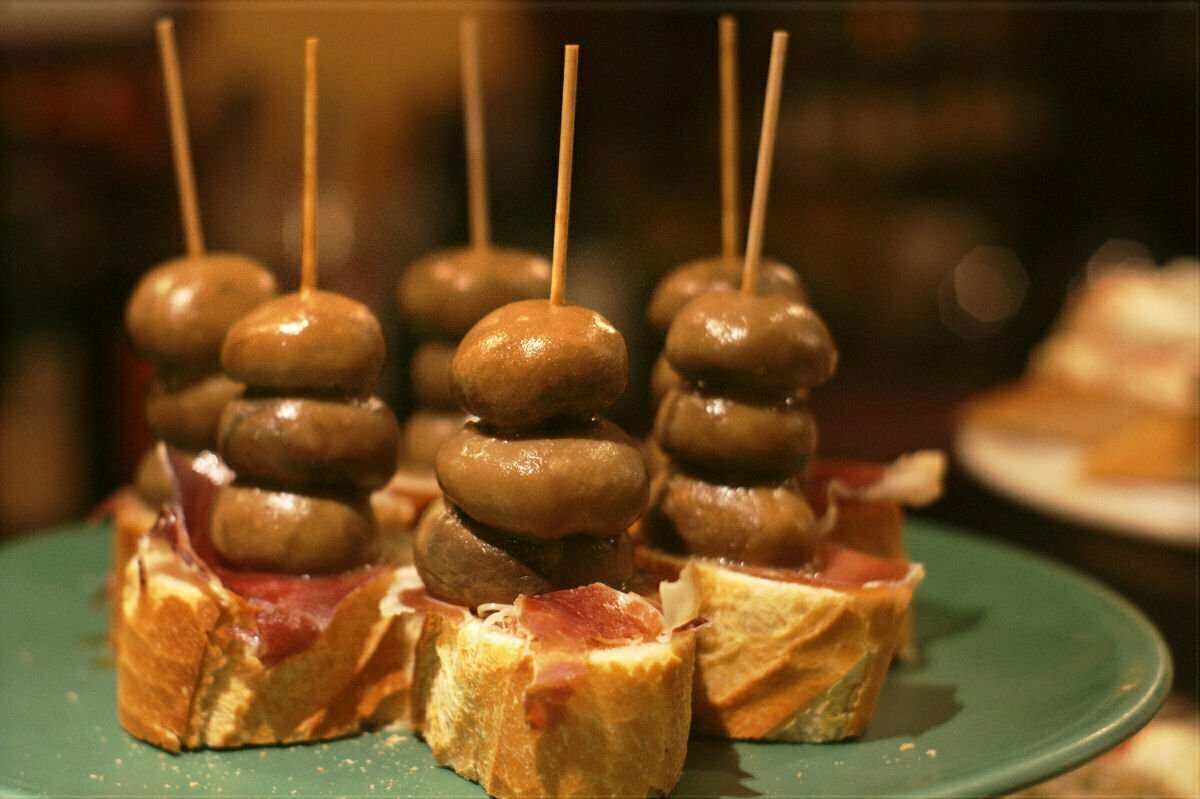
Navarre Pintxo week (Semana de Pintxo)
The spring doesn’t only bring flowers. With it also comes Navarre Pintxo Week, a gastronomic event in which for 10 days numerous bars and restaurants from the entire region compete to make the best haute cuisine pintxo.
If you’re passionate about gastronomy, finger food and a good atmosphere, this is for you. This special week is held in various Navarrese towns and villages although nowhere more than in the capital, Pamplona. The event usually occurs around the middle of March each year (check the official website for more details).

Learn the secrets of the Mediterranean Diet –
It’s no secret that the Mediterranean diet is healthy. It has been proven in numerous studies from all corners of the world, it aids weight loss, reduces the risk of heart disease and type 2 diabetes, as well as a growing list of other health benefits.
Find out what’s most exciting about the diet and create some incredibly tasty and simple Spanish recipes.
Looking for more travel inspiration?
Check out our other Regional foodie guides from all over Spain!
The Basque Country
Straddling part of the border between France and Spain, the Basque Country (País Vasco) has an incredibly diverse landscape that extends far beyond the renowned foodie capitals of larger cities such as San Sebastian and Bilbao. While the region is small, it has the highest concentration of Michelin-starred restaurants in the world per capita.
Galicia
Exploring the far northern Galicia region by food is like opening a foodie treasure trove. With a rugged coastline that divides two seas, undulating hills, and large fertile plains that benefit from the highest annual rainfall in Spain. Galicia is blessed with exceptional quality fresh produce, seafood, meat, and dairy products at every turn.
Galician cuisine is perhaps most famous for the stunning dessert, the Tarta de Santiago, but visitors to the region should take time to explore the many delicacies and dishes that are made in the region.
Madrid
They say that all roads lead to Madrid and a small stone slab lies discretely within Madrid’s Sol Plaza celebrating the geographic kilometer ZERO of Spain. But, it’s just a short stroll in any direction where you’ll find the rich aromas of authentic Spanish food wafting from the alleyways and narrow cobbled streets that are lined with Madrid’s famous tapas bars and prestigious restaurants.
Madrid is not only the geographic center of Spain but also the renowned melting pot where Spain’s culinary cultures merge. This is no more evident than in the enormous range of Spanish and international cuisine on offer throughout the capital, and with nearly 10,000 restaurants within the Madrid region, you’re spoilt for choice!
The Valencia Region
With its white-sand beaches and turquoise water of the Mediterranean Sea, the Valencia region harbors some of the best cuisine and fresh produce in Spain. Orange groves are dotted all the way up and down the region, and the rich fertile soil makes for ideal vineyards, producing excellent wines. It’s also one of only two UNESCO-listed locations for gastronomy and is home to many of Spain’s most renowned restaurants.
Catalonia / Cataluña
The Catalonia region is perhaps best known for its thriving capital, Barcelona, but a close second when you mention Catalonia is the food. The region offers a wealth of authentic Spanish cuisine that has resonated all around the world.
With its borders spanning from the Mediterranean Sea in the east, to the stunning rugged grazing plains of Aragón, to the picturesque mountainous zones of the Pyrenees mountain ranges, the Catalonia region has it all!
The Spanish Radish Blog
Spanish Gazpacho Andaluz | VEGAN Chilled Soup Recipe
Spanish Gazpacho Andaluz Spain's favorite VEGAN chilled soup recipe! Gazpacho Andaluz is a delicious and fresh soup recipe that will transport your tastebuds straight to the sun-kissed landscape of Andalusia, Spain. This soup is...
Mediterranean Rainbow Salad with Easy Olive Oil Salad Dressing | Healthy VEGAN Recipe
Mediterranean Rainbow Salad with Easy Olive Oil Salad Dressing Embrace the summer vibes with this Mediterranean twist on a classic and colorful Rainbow salad. This recipe is healthy, loaded with healthy salad veggies that are a...
Spanish-Style Chicken Marinade – 30 Sec Recipe with 8 Ingredients
Spanish-Style Chicken Marinade Elevate your chicken recipes with this super easy Spanish-style chicken marinade with big Spanish flavors. This marinade requires no special equipment (a jar and a fork) and can be whipped up in...
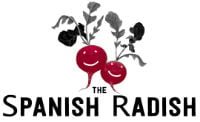

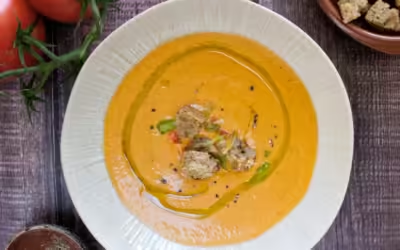
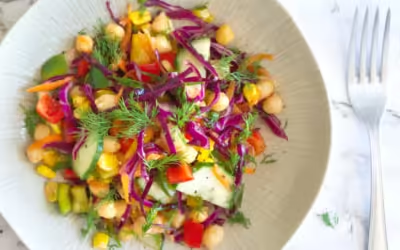
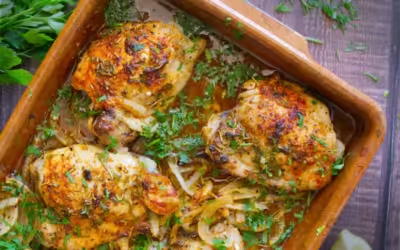
0 Comments